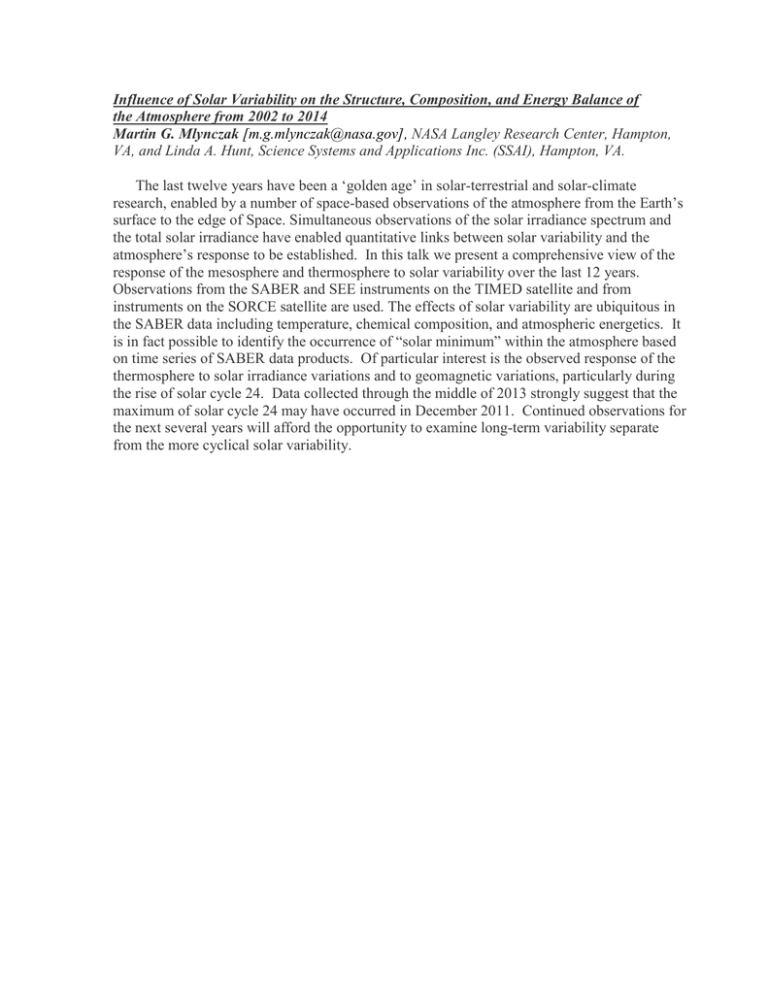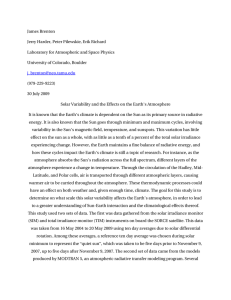Influence of Solar Variability on the Structure, Composition, and Energy... the Atmosphere from 2002 to 2014
advertisement

Influence of Solar Variability on the Structure, Composition, and Energy Balance of the Atmosphere from 2002 to 2014 Martin G. Mlynczak [m.g.mlynczak@nasa.gov], NASA Langley Research Center, Hampton, VA, and Linda A. Hunt, Science Systems and Applications Inc. (SSAI), Hampton, VA. The last twelve years have been a ‘golden age’ in solar-terrestrial and solar-climate research, enabled by a number of space-based observations of the atmosphere from the Earth’s surface to the edge of Space. Simultaneous observations of the solar irradiance spectrum and the total solar irradiance have enabled quantitative links between solar variability and the atmosphere’s response to be established. In this talk we present a comprehensive view of the response of the mesosphere and thermosphere to solar variability over the last 12 years. Observations from the SABER and SEE instruments on the TIMED satellite and from instruments on the SORCE satellite are used. The effects of solar variability are ubiquitous in the SABER data including temperature, chemical composition, and atmospheric energetics. It is in fact possible to identify the occurrence of “solar minimum” within the atmosphere based on time series of SABER data products. Of particular interest is the observed response of the thermosphere to solar irradiance variations and to geomagnetic variations, particularly during the rise of solar cycle 24. Data collected through the middle of 2013 strongly suggest that the maximum of solar cycle 24 may have occurred in December 2011. Continued observations for the next several years will afford the opportunity to examine long-term variability separate from the more cyclical solar variability.


